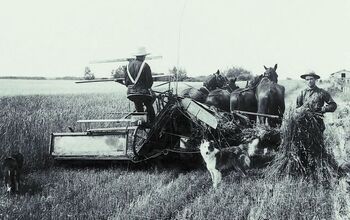Easy and Effective Frugal Living Tips From the Great Depression

The Great Depression, spanning from 1929 to the late 1930s, remains one of the most pivotal events in modern history. It was a time of widespread economic hardship, unemployment, and social upheaval that left an indelible mark on society, both in the US and globally.
However, amidst the despair, communities rallied together, demonstrating resilience and resourcefulness, and fostering a culture of frugality that holds valuable lessons for today's world.
I believe that there are important frugal living tips to be learned from the Great Depression. Let’s talk some more about it.
What was the Great Depression?
The Great Depression was triggered by the stock market crash of 1929, but its causes were deeply rooted in the economic policies and practices of the time. Banks failed, businesses collapsed, and millions lost their jobs.
The unemployment rate soared to unprecedented levels, reaching a peak of 25%. This severe and prolonged economic downturn affected not only the United States but also had global repercussions, with a sharp decline in industrial production, widespread unemployment, and a severe contraction of international trade.
Numerous factors contributed to the onset of the Great Depression, including the stock market crash, banking failures due to lack of regulation, reduced consumer spending, and the devastating Dust Bowl that struck the Great Plains in the 1930s.
Government responses, such as the Federal Reserve's monetary policies and the Smoot-Hawley Tariff Act, did not address the crisis sufficiently.
Social impact
The Great Depression had profound social and personal impacts, plunging millions into poverty and homelessness.
Families struggled to afford basic necessities, leading to the emergence of shanty towns known as Hoovervilles. Malnutrition became widespread, and the psychological toll on individuals and communities was immense.
Unemployment tore families apart, prompting mass migration in search of work and better prospects. Widespread social unrest and activism emerged as people mobilized to demand relief and reform. Many social movements arose, and labor unions organized strikes for better wages and working conditions, laying the groundwork for significant policy changes and social reforms.
Government response
Government relief programs such as soup kitchens and bread lines provided essential food assistance to those in need but not everybody got it, and access to those nutritious meals remained a challenge for millions. President Franklin D. Roosevelt implemented a series of reforms known as the New Deal to address the economic crisis.
Programs such as Social Security and the Works Progress Administration played a role in stabilizing the economy, but it was the mass industrial mobilization during World War II that ultimately lifted the United States out of the Great Depression.
Life during the Great Depression
Life during the Great Depression was marked by austerity and severe hardship. Families struggled to make ends meet, relying on meager resources and community support networks to survive. Frugality became a way of life, as individuals and families learned to stretch every dollar and make the most of what they had.
Cooking became synonymous with resourcefulness, with Depression-era recipes emphasizing simplicity and no waste. Meals were simple, inexpensive, and made from whatever basic ingredients people could get their hands on.
Bean soup, meals based around potatoes, and pasta with a tomato or vegetable sauce were popular choices, as they were affordable and could be made with basic pantry ingredients. Many frugal recipes from the Great Depression are popular to this day, due to their affordability and ingenuity.
In addition to frugal cooking, people found innovative ways to stretch their resources in other aspects of life. Instead of discarding worn-out clothing or household items, mending and reusing became common practices. Sewing machines became invaluable tools as families patched up clothing and linens, ensuring that nothing went to waste.
People found creative ways to repurpose materials and items that would otherwise be discarded, and the concept “disposable” did not exist. Old newspapers were used for insulation or wrapping paper, and empty tin cans were transformed into makeshift containers or household goods. Waste was seen as a luxury during the Great Depression, and people were mindful of conserving resources wherever possible.
Self-reliance and community
In communities, the Great Depression fostered a spirit of solidarity and compassion as neighbors looked out for one another. Soup kitchens and breadlines became lifelines for the unemployed and destitute, providing free or low-cost meals to those unable to afford food. Mutual aid networks sprang up across the country, with neighbors sharing resources and support.
Urban and rural households alike embraced the principles of self-reliance, cultivating gardens, raising livestock, and finding ways to reduce their dependence on outside resources. Vacant lots, backyards, and rooftops were turned into small gardens to supplement diets with fresh fruits and vegetables. Many families kept small livestock such as chickens, rabbits, and goats to produce eggs, meat, and milk, reducing grocery bills and ensuring a sustainable diet.
Bartering and trading also became common practices as people sought to exchange goods and services without the need for cash. Whether it was trading surplus produce for other essentials or exchanging skills and labor with neighbors, bartering allowed people to meet their needs through mutual cooperation and resourcefulness.
Innovation
Despite the hardships of the Great Depression, innovation thrived as people devised ingenious ways to cope with scarcity and adversity. Homemade toys and DIY home repairs became common practices, fostering creativity and resourcefulness among individuals and families.
Children found joy in simple homemade creations crafted from scraps of materials and household items, while adults tackled household repairs themselves, saving money and preserving assets in the process.
Lessons for today
The Great Depression was a time of immense hardship and adversity, but it brought out resilience, ingenuity and compassion of the human spirit. Through frugality, common support, self-sufficiency and creative solutions, individuals and communities found ways to survive through the great challenges of this era.
Frugal living tips from the Great Depression
These lessons from the Great Depression continue to resonate with us today, particularly in times of economic struggles. Hopefully they will serve as a reminder of the power we have if we are resourceful, persevere in times of a crisis, come closer together and work as a community.
What Great Depression frugal tips do you think you can incorporate into your own life? Or which habits have you already fostered that help you save money and remain self reliant? Share in the comments!
Next, learn 20 Easy Ways to Keep Your House Warm on a Budget.





















Comments
Join the conversation